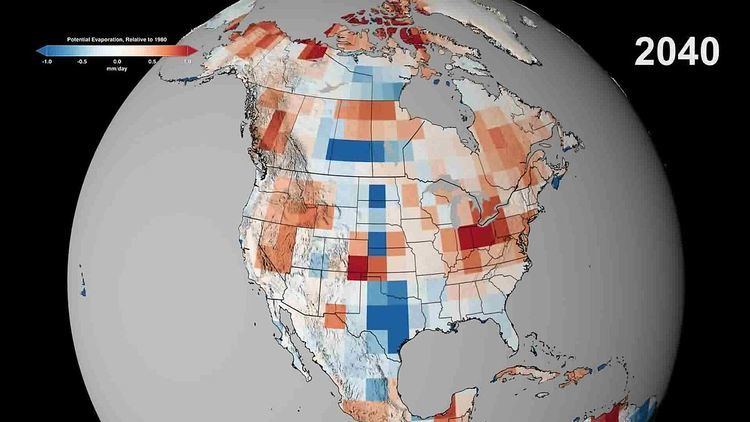 | ||
Potential evaporation or potential evapotranspiration (PET) is defined as the amount of evaporation that would occur if a sufficient water source were available. If the actual evapotranspiration is considered the net result of atmospheric demand for moisture from a surface and the ability of the surface to supply moisture, then PET is a measure of the demand side. Surface and air temperatures, insolation, and wind all affect this. A dryland is a place where annual potential evaporation exceeds annual precipitation.
Thornthwaite equation (1948)
Where
Somewhat modified forms of this equation appear in later publications (1955 and 1957) by Thornthwaite and Mather.
